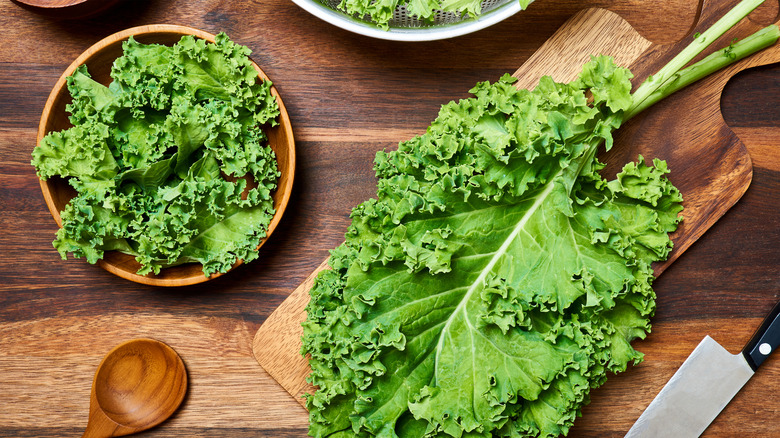Major Signs That Your Kale Is Starting To Go Bad
It's happened to the best of us. You stock up on fresh produce at the grocery store, planning to chow down on a scrumptious salad or other dish every day or in the near future. You tuck your fresh produce finds in your fridge's produce drawer ... and then promptly forget about those fruits and veggies until days or even weeks later.
If you're staring down a bag of kale that you bought more than a few days ago, you may assume that you have to toss it, but hold up. That kale might still be good for something. There are a few major signs that your kale is starting to go bad that will tell you a lot more than just the best-by date on the packaging. Kale that's spoiled will be discolored, limp, moldy, smelly, and/or mushy. If you notice any of these changes in your kale's appearance or aroma, stick to the safe side and toss your kale in the trash.
Keep your kale from going bad in the first place
While, eventually, all kale will start to go bad at some point if left to linger in your produce drawer, you can take measures to extend its life when you first bring your kale home. This, of course, will allow you more time to use it in your favorite kale recipes.
Practice proper kale storage by drying the kale before storing the leaves in a plastic bag. The more moisture that's in or on your kale, the faster it'll go bad. If you plan on using kale in soups, smoothies, or in any recipe that doesn't require it to remain leafy and crisp, consider freezing your kale. Just prep, chop or tear, and blanch the kale leaves, before drying them, and freezing them in an airtight bag or other container for later use. If you skip the blanching process, the kale will last up to six weeks in the freezer; after blanching, which halts the ripening process, the kale will last up to a year in the freezer.

